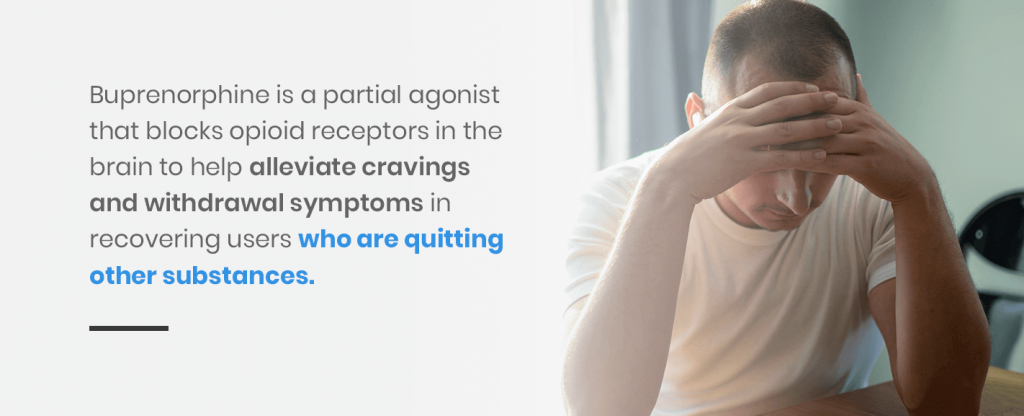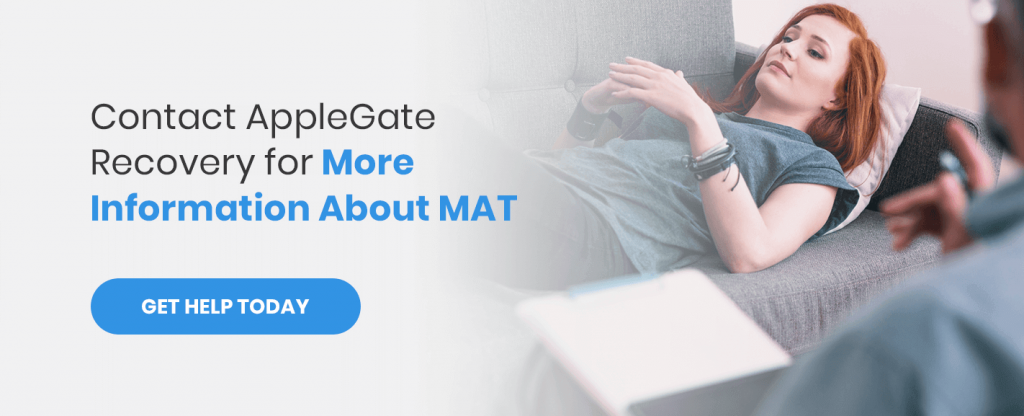While approximately 2.1 million Americans have reported a substance use disorder linked to prescription opioid pain medicines, only 17.5% of those struggling with a prescription opioid use disorder said they receive specialized treatment for their condition. Effective opioid abuse disorder treatment methods exist, but they are widely underused on a national level. Mostly, medication-assisted treatments are underused because of the common misconceptions surrounding them.
To help make opioid medication-assisted treatment options easier to understand, this article will look at how opioids can help treat substance use disorder, the three main types of opioid medications used for treatment and why opioid medication is an effective recovery approach. If you or a loved one is looking for a successful substance use disorder treatment, keep reading to find out how medication-assisted treatment could help.
What Are Opioids in Medication?
Many people think that drug-use detoxification with complete abstinence is the only path to addiction recovery, but there is a way to use medication as a tool to effectively maintain long-term sobriety. Despite many fallacies about medication-assisted treatment (MAT) substituting one drug for another, research has found MAT to be the most effective method for assisting someone who struggles with an opioid abuse problem. The U.S. Food and Drug Administration (FDA) has approved numerous medications for substance use disorder recovery.
The basis of MAT is the premise that some medications reduce cravings and the unpleasant side effects of withdrawal without creating the same euphoric high drug abuse typically causes. By mitigating the physical symptoms of withdrawal and intense cravings, MAT enables recovering addicts to fully concentrate on building healthy habits and leading a sober lifestyle. While each type of MAT medication has the same goal, there are different kinds of opioids used as addiction medicine, which we will discuss more in-depth below.
Types of Opioid Medications
There are three main types of opioid medications used for MAT: opioid agonists, partial agonists and opioid antagonists. Each of the three kinds of medications come with unique pros and cons, and can be effective for people at various phases of their recovery journeys.
Below are the main characteristics of each MAT opioid medication.
1. Opioid Agonists
A synthetic opioid agonist is one of the oldest and most commonly used medications used to treat opioid use disorder. Opioid agonists stimulate the same opioid receptors in the brain as addictive substances like morphine, heroin and other types of opioid painkillers. By engaging these receptors, opioid agonists relieve withdrawal symptoms and decrease cravings.
The most frequently used synthetic opioid agonist used for MAT is called methadone. Methadone activates the brain’s opioid receptors more slowly than other opioids and does not produce a euphoric high in opioid-dependent people, making a single dose of methadone enough to last all day. Due to its engaging and slow-acting properties, methadone has helped people successfully treat substance use disorder for more than 40 years.
2. Partial Agonists
Partial opioid agonists also bind to opioid receptors, but they activate the receptors at a far lower strength than full opioid agonists do. Because most partial agonists have a ceiling effect that limits their ability to create a high, they can lower the risk of overdose and some side effects. Though lower in strength, partial agonists are still useful for reducing withdrawal symptoms and cravings for people recovering from substance use disorder.
Buprenorphine is one of the best-known partial agonists used for MAT. It was the first medication made eligible for prescription by any certified physician, rather than a specialist, by the FDA in 2002. When given at an adequate dose for a sufficient amount of time, buprenorphine is similarly effective for treating opioid use disorder as methadone.
3. Opioid Antagonists
Unlike opioid agonists and partial agonists, opioid antagonists do not engage any opioid receptors. Instead, they block opioid receptors to prevent any other types of opioids from engaging with the receptors to produce a euphoric high. By negating the usual effects of using other opioids, taking opioid antagonists helps people refrain from falling back into unhealthy habits.
One common opioid antagonist is naltrexone, which does not relieve cravings or withdrawal symptoms, but can block opioid receptors. To avoid immediate withdrawal symptoms, someone taking naltrexone should ensure all other types of opioids are out of their system. Because naltrexone may not help manage the effects of withdrawal as well as other MAT approaches, it works best when paired with another method of recovery support, such as counseling.
What Is Buprenorphine?
Buprenorphine is a partial agonist that blocks opioid receptors in the brain to help alleviate cravings and withdrawal symptoms in recovering users who are quitting other substances. Buprenorphine is effective alone or in combination with naloxone, an opioid antagonist, as it is in compound medications like Suboxone®. Naloxone does not cause a high, but can cause immediate withdrawal symptoms when not used correctly, discouraging misuse and diversion.

Both methods effectively treat substance use disorder and reduce relapse rates when taken over an extended period. Many recovering users begin taking buprenorphine at a relatively high dose, which the medications’ ceiling effect makes safe, to quickly eliminate withdrawal symptoms before easing into a lower dosage. It’s essential for clients to always work alongside a trusted medical provider to determine the best dosage.
Typically, buprenorphine treatment happens in these three phases.
- Induction: Medically monitored buprenorphine treatment begins after someone has abstained from opioids for 12 to 24 hours.
- Stabilization: Once the person has few to no cravings and withdrawal symptoms, a qualified physician may lower their buprenorphine dose.
- Maintenance: If buprenorphine treatment has gone smoothly, it’s time to discuss other recovery options, such as medically supervised withdrawal.
At AppleGate Recovery, we combine buprenorphine treatment with counseling and case management to provide clients recovery support from all angles. As the buprenorphine relieves the physical side effects of withdrawal and enables former users to focus on other aspects of recovery, counseling helps them address the mental and emotional complexities of substance use disorder. In both individual and group settings, people can learn practical life skills to overcome challenges to sobriety and stay clean after treatment.
Why Use Opioid Medication in Addiction Treatment?
Research shows that opioid medications like buprenorphine, methadone and naltrexone are all effective treatments for reducing opioid use disorder-related symptoms. MAT approaches also boost the likelihood of people remaining in treatment, which lowers their risk of overdose. Staying actively involved in medication-assisted treatment can also reduce the probability of criminal activity among recovering users, while increasing their likelihood of employment.
While MAT medications are themselves opioids, partaking in a medication-assisted form of substance use disorder treatment is not substituting a new substance for the old one. Although MAT medications like buprenorphine and methadone can produce a high in the average person, they cannot have a euphoric effect on people battling substance use disorder because these former users have built up a high tolerance to opioids.
When taken at the appropriately prescribed dose, MAT medications minimize craving and withdrawal symptoms instead of producing a high. Lessening these symptoms can make getting sober more manageable and less discouraging than a traditional abstinence-based treatment approach. Along with decreasing the mortality rate of those beginning recovery, MAT can improve clients’ social functioning.
Once someone has reduced their withdrawal side effects through medication, they can function normally and attend school or work regularly. As an outpatient treatment, MAT allows clients to maintain their usual schedules, stay connected with their families and uphold their usual responsibilities.
MAT clients can also participate in other forms of treatment or recovery support services, with the ultimate goal of gradually weaning themselves off their MAT medication. Clients shouldn’t make this decision without seeking their treatment provider’s input, and should always taper off their use over time under medical supervision.
Contact AppleGate Recovery for More Information About MAT
If MAT sounds like the right strategy for you or a loved one, contact AppleGate Recovery to learn more about entering the beginning phases of treatment and beginning the journey to recovery. At AppleGate Recovery, we treat clients with extra care and respect while helping them maintain a healthy lifestyle through MAT and counseling sessions. We prioritize confidentiality and work with our clients to come up with a treatment plan tailored to their individual situations.
Find the AppleGate Recovery treatment location nearest you, or call 888-488-5337 to schedule a visit or appointment today.

